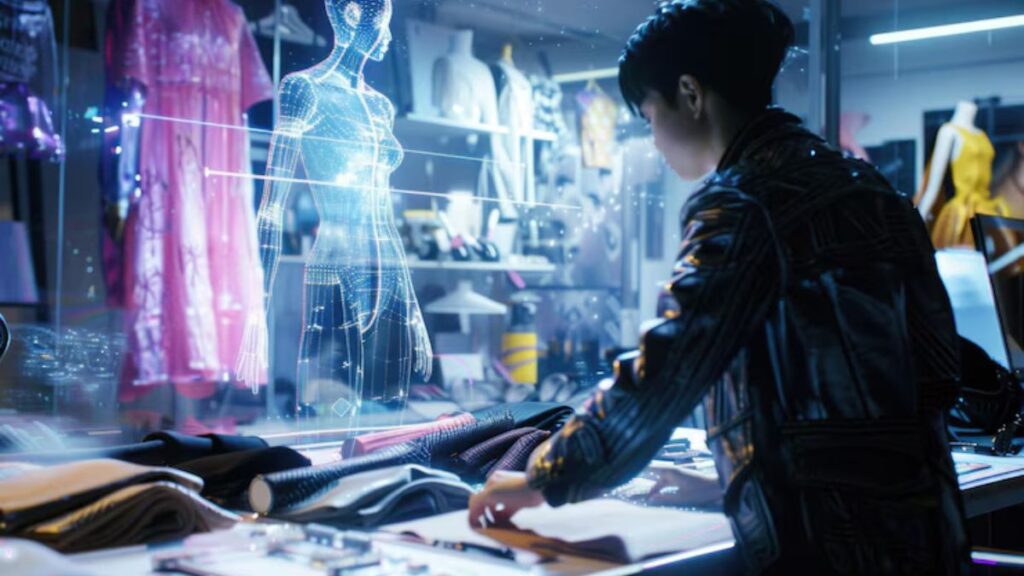In a world teetering between fast fashion burnout and the craving for heritage craft, Luuxly.com doesn’t walk in—it sashays.
The digital boutique, a rising force in the luxury resale and curated fashion space, isn’t just another dot-com playing dress-up with designer tags. It’s reimagining the art of access—democratizing what was once locked behind velvet ropes, glass cabinets, and intimidating boutiques. It’s not just resale; it’s curation with couture attitude.
But what is Luuxly, really? And how is it flipping the script in a fashion landscape obsessed with sustainability, authenticity, and scarcity? Let’s get into the seams of this online marvel.
The Genesis of Luuxly.com: Where Opulence Meets Opportunity
If fashion is a form of language, Luuxly speaks in fluent luxury. Founded with the bold mission of fusing accessibility with authenticity, the platform emerged during a pivotal cultural moment—a time when consumers began asking tougher questions: Where is my clothing coming from? Is it worth it? Can I trust this price tag?
Luuxly.com stepped in like the fashionable friend who knows the best sample sales, has a Chanel hookup, and would never let you leave the house in last season’s Balenciaga. The platform is built around trust—a key differentiator in a resale world still marred by fakes, markups, and the digital version of back-alley dealings.
While its full backstory remains semi-cloaked in the digital fog (a marketing mystery that may be deliberate), what we do know is this: Luuxly is helmed by a team of e-commerce stylists, luxury sourcers, and possibly, reformed fashion insiders who’ve seen the industry from both its gilt-edged runways and its fluorescent-lit stockrooms. That perspective is stitched into everything—from site design to product descriptions.
The Aesthetic: Digital Decadence with Zero Pretense
Clicking into Luuxly.com feels like stepping into the future of luxury shopping—but without the guilt trip. Unlike the overly minimal, sterile UX trends that dominate most fashion e-tailers, Luuxly walks the line between sleek and sensory. It’s curated, but not cold. Browsable, but not basic.
Product shots are crisp, often modeled, and emotionally charged—because let’s be real, nobody buys a Hermès bag just for function. Descriptions aren’t robotic listings—they’re written with wit and reverence. A vintage Versace blouse is “ready to flirt with the room,” and a rare Gucci duffle is “your weekend’s best decision.” In a sea of cold item codes, Luuxly’s copywriting feels like a martini on a Monday: unexpected, a bit naughty, and exactly what you didn’t know you needed.
But what really stands out is intimacy. Luuxly doesn’t throw a thousand options at you. Instead, it feels like an insider tipping you off to just-dropped gold. That scarcity effect? Intentional. It keeps you coming back—haunting the “New In” section like it’s your morning espresso.
The Curation: Luxury With Street Smarts
Let’s address the elephant in the atelier—how does Luuxly choose what makes the cut?
This isn’t your average “take-anything-label-heavy” resale platform. Luuxly.com doesn’t just want luxury. It wants relevance. The inventory leans into both heritage and hype. Think: archival Dior saddle bags one scroll away from rare Off-White x Nike collabs. Vintage Prada meets current Loewe. A 1990s Fendi baguette could be followed by a deadstock Y/Project trench.
That high-low alchemy is what gives Luuxly an edge. It understands that today’s fashion-literate buyer isn’t stuck in the ivory towers of runway seasons—they’re on Instagram, on TikTok, on the sidewalks of Shoreditch and SoHo, remixing high fashion with thrifted chaos. Luuxly is fluent in that dialect. It’s not just selling you what’s expensive—it’s selling you what’s iconic.
And it’s fast. The platform updates its listings at a pace that mirrors drops, not just restocks. That means a product spotted in the AM could be gone by your lunch break. FOMO marketing? Absolutely. But also, a testament to Luuxly’s growing cult following.
Authentication: Where Receipts Meet Ritual
Trust in the resale market is more fragile than a pair of vintage Margiela Tabi boots in the rain. Counterfeits, swaps, and overpriced “collectibles” plague the industry—and Luuxly knows it.
Which is why its authentication process is the hill it dies on.
Every piece listed on the site undergoes a multi-tier authentication protocol. That means real humans—experts, not interns—scrutinize stitching, stamps, serial numbers, hardware, and provenance. The platform is said to partner with third-party verification services and runs internal checks by former luxury brand specialists. It’s not a boutique that dabbles in authentication; it’s a platform built on it.
And that clarity bleeds into the listings: each product includes a confidence-inspiring label: 100% Authentic. Authenticated by Luuxly. No guesswork. No vague “believed to be real” hedging.
Sustainability and the Circular Chic Economy
Let’s not sugarcoat it: the fashion industry has a waste problem, and luxury isn’t exempt.
But Luuxly.com is part of the new guard reframing resale as aspirational, not second-rate. It leans into the narrative that wearing vintage Saint Laurent isn’t just stylish—it’s savvy. That buying a gently used Burberry trench doesn’t mean you can’t afford retail; it means you’re smarter than retail.
By promoting secondhand luxury as the smarter, more sustainable option, Luuxly taps into Gen Z’s eco-conscious mindset and Millennials’ money-smart sensibilities. It reframes the consumer as curator—not just buyer. Every purchase is both a style choice and an environmental stance.
Even packaging gets the treatment. Luuxly reportedly ships in recyclable materials, often reusing designer dust bags and boxes when available. It’s a small touch, but in today’s climate, it matters.
Pricing and Access: Smart Splurging, No Sticker Shock
Luxury resale lives and dies by the price tag—and Luuxly plays the game well.
The platform doesn’t overinflate. Instead, it prices according to rarity, condition, brand cachet, and trend momentum. That means you might snag a Balmain blazer for under $500 or a limited-edition Jacquemus bag for less than retail. Pricing is transparent—clear breakdowns of original value, estimated market worth, and Luuxly’s offer price are often included.
This isn’t a platform trying to trick you. It’s wooing you—with logic.
It also occasionally drops exclusive promotions for members—email subscribers and insiders who get early access, private sales, and price reductions on wishlist items. There’s no flashy loyalty program (yet), but the return customer experience feels elevated: fast support, personal styling advice, and restock alerts.
The Community: Style Without the Snobbery
One of Luuxly’s most quietly powerful assets? Its community.
The brand has cultivated a growing fanbase across Instagram, TikTok, and newsletters—not just as followers, but participants. From styled flat-lays to IRL photoshoots of customers rocking their Luuxly finds, the community’s aesthetic is aspirational but not unrelatable. It’s style without snobbery. Think: your cool older cousin with killer taste and zero ego.
Influencers have started catching on too—especially those in the “quiet luxury” and “archive-core” spaces. What’s key, though, is that Luuxly hasn’t gone full commercial. It collaborates selectively, prioritizing organic brand love over paid campaigns. That authenticity breeds trust—and keeps the platform from falling into the trap of becoming “just another resale brand.”
Luuxly vs. The Giants: Why This Underdog Stands Tall
Let’s be real: Luuxly.com exists in a jungle. The RealReal, Vestiaire Collective, Grailed—they’re all formidable. But Luuxly isn’t trying to outscale them. It’s trying to outcurate them.
While giants go broad, Luuxly goes sharp. Its niche focus on editorialized curation, cultural relevance, and luxury authenticity gives it a singular voice. Where others feel transactional, Luuxly feels crafted.
Plus, it’s nimble. Without the bureaucracy of mega-operations, Luuxly can pivot faster, source smarter, and trend harder. It’s not trying to be Amazon for fashion—it’s trying to be Chanel meets the corner store.
What’s Next for Luuxly?
As resale continues to surge—expected to outpace fast fashion growth globally over the next decade—Luuxly stands at a tantalizing crossroads. The questions ahead:
-
Will it launch its own in-house line, remixing vintage with original design?
-
Will it expand into beauty or homeware to reflect a full luxe lifestyle?
-
Will it open physical pop-up shops in fashion capitals for IRL styling?
Whichever path it takes, one thing is clear: Luuxly has carved out a lane not just in resale, but in culture. It’s not just a site—it’s a moodboard, a manifesto, a modern-day salon for the style-obsessed.
The Final Stitch
Luuxly.com isn’t just selling you a designer item—it’s inviting you into a mindset. A world where fashion is circular, not disposable. Where luxury is accessible, not exclusive. Where taste is timeless, not trending.
It’s rare to find a platform that feels this personal, this editorial, this human—especially in a digital space ruled by algorithms and warehouses. Luuxly is proof that the future of luxury doesn’t lie in shiny malls or impersonal mega-sites. It lives in curated scrolls, in thoughtful details, in trust.
So go ahead. Fall in love with that vintage Mugler blazer. Hit “add to cart” on the Dior saddle that’s been haunting your dreams.
Because in a world of fast, loud, and fake—Luuxly is slow, intentional, and real.






